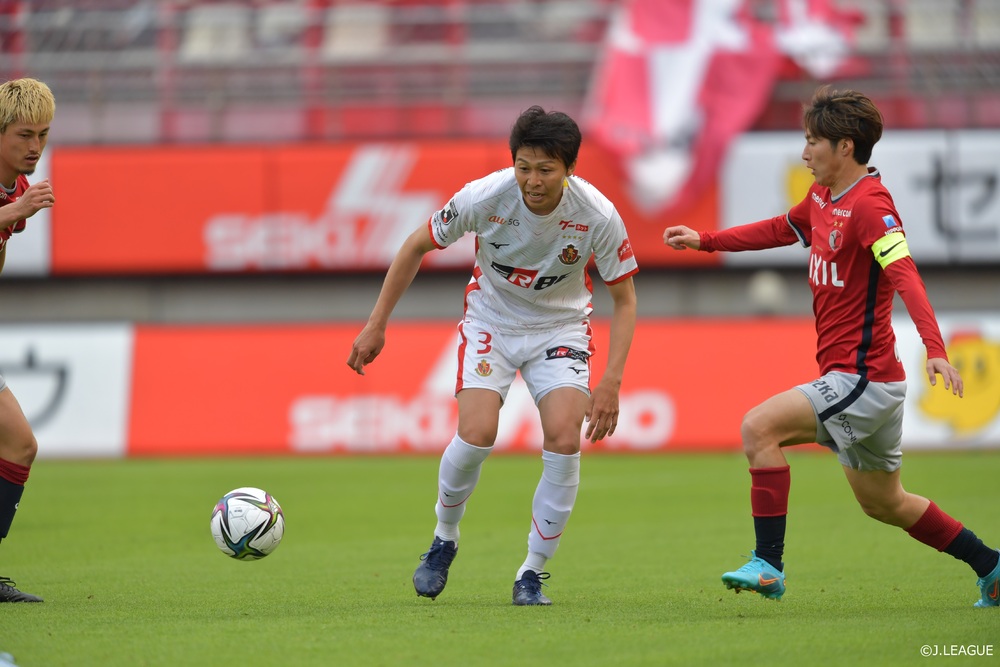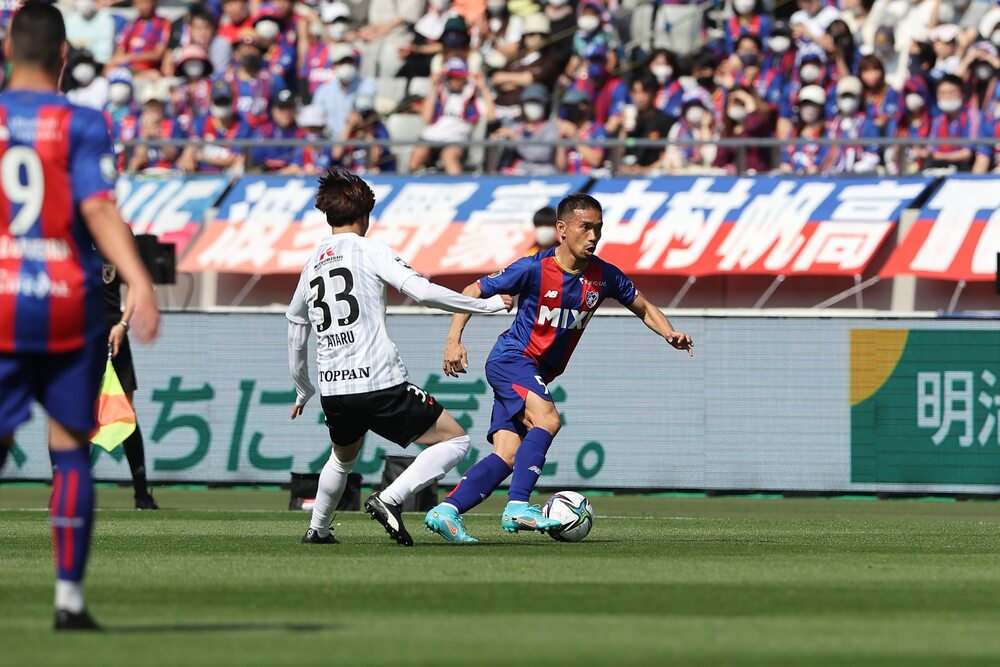4/20 Nagoya Grampus Match Kohei Baba Column "Facing Kenta-san Fair and Square" (Published on 4/1)
In the crucial moments, daily efforts are revealed. It's a painful truth for me, but for the players, daily practice means that every match is a big game. The teams that have accumulated such daily efforts will clash at Ajinomoto Stadium.
This season, Nagoya Grampus, under the leadership of Kenta HASEGAWA, has been struggling to break free from the pains of creation. It seems they are having a hard time updating from the solid defense and quick counterattack style of play led by the previous coach, Massimo FICCADENTI.
However, it seems they have found a glimmer of hope. On the 10th, they suffered a 0-2 defeat against Hokkaido Consadole Sapporo in the 8th round of the J1 League. Following that loss, the coach stated, "I talked to the players about what kind of soccer I want to play." Three days later, in the J.League YBC Levain Cup match against Sanfrecce Hiroshima, they showcased a performance that was truly the soccer that Coach HASEGAWA aims for, having changed the system to 3-5-2.
Forward――.
The aggressive commander, who seems to wear his mindset, is trying to instill that awareness in Nagoya. It was the same with FC Tokyo, which he led until last season. Phrases like "intensity," "fight," and "hard work" that I heard repeatedly still linger in my ears. In every team he has coached, he has made skilled players run desperately and fight. I thought it would be the same in Nagoya, but perhaps there was some hesitation. However, it seems that the limits have been lifted here. In the last two matches, Nagoya is transforming into a team fully embracing Kenta's philosophy, demanding an almost relentless intensity.
There is a phrase that remains deeply impressed from the words spoken during the Tokyo era.
"When you're building a team, there are times when you hear a click, like a puzzle fitting together."
The sound was surely made by the return of Yuichi MARUYAMA. After the match against Kashima Antlers in the previous round, he mentioned, "His return led to a change in positioning." When we unravel the new design of Nagoya, it becomes clear. The positioning is 3-1-4-2, but the center is very solid. When the opponent holds the ball, they close in the middle and push it outwards. Not only do they draw the two inside halves against opponents targeting the anchor, but the well-coordinated three-back also actively steps up to fill in. This shows that the entire team has a strong awareness of moving forward.
And the familiar Kenta-style "fast break" is still alive, sprinting to hunt the ball from the front line during the ball's movement. Technicians like Yoichiro Kakitani and Mu KANAZAKI are sealing off the source of the ball with repeated pressure. The intention to place Mateus CASTRO at the forefront must be part of that strategy. In the match against Kashima, that short counterattack became the biggest scoring opportunity. In the 28th minute of the first half, Inagaki intercepted a pass from the opposing goalkeeper in enemy territory, connecting with Sendou and Matheus to finish the play.
Anyway, forward, forward, even when it's the opponent's ball, we come out with momentum. It's really aggressive, that familiar style of football.
How will the reborn Nagoya and Tokyo compete against each other?
The answer is obvious. There is no need to change the way we fight.
We will simply continue to do what we have been doing since the beginning of the season, with integrity. To prevent our territory from becoming a hunting ground, we need to ensure quick ball movement that does not allow the opponent to create opportunities. This is also something that Albert PUIG ORTONEDA has consistently demanded.
By moving the ball and exhausting the opponent, the movement of a third player becomes effective against a committed defense. For example, a winger drops back to create space for an inside midfielder or a fullback to make a run. The fluid triangle that changes positions and moves the opponent is truly the essence of positional play. To dominate the match, immediate recovery of lost balls is essential. This is a theme that is two sides of the same coin; if you are losing at the ball, it plays right into Nagoya's hands.
Both teams working on a new game model have passed several months since its implementation. The style, which has gradually become more pronounced, clashes. There, the results of their daily efforts are reflected.
And, since it's important, I think I'll stubbornly talk about the column I wrote before again. This is not a story about welcome back or I'm home.
"Complicated?"
No, no, we have to face off directly against Kenta HASEGAWA, the coach leading Nagoya. That is the football etiquette taught by a passionate, passionate leader. Now, let's compete, Mr. HASEGAWA.
Text by Kohei Baba (Freelance Writer)





